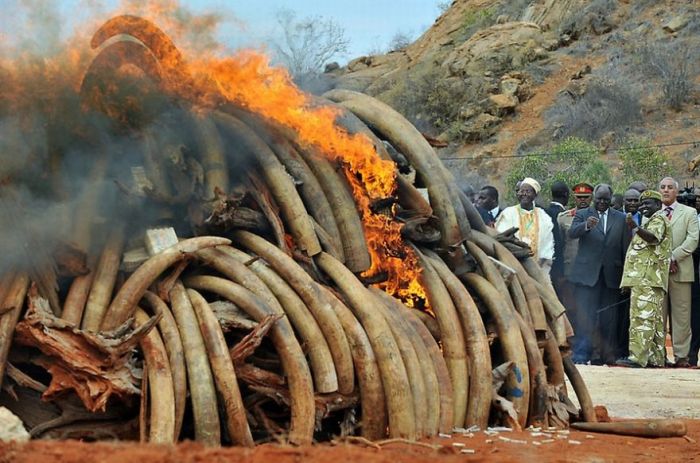|
|
Ivory Tusks Burned, Kenya
|
According to the United States government, Alaska natives (including Indians, Eskimos and Aleuts) are allowed to harvest walrus for substinence as long as the harvesting is not wasteful. The natives are permitted to sell the ivory of the hunted walrus to non–natives as long as it is reported to a United States Fish and Wildlife Service representative, tagged and fashioned into some type of handicraft. Natives may also sell ivory found within 0.25 miles (0.40 km) of the ocean—known as beach ivory— to non–natives if the ivory has been tagged and worked in some way. Fossilized ivory is not regulated, and can be sold without registering, tagging or crafting in any way. In Greenland, prior to 1897, it was purchased by the Royal Greenland Trade Department exclusively for sale domestically. After that time, walrus ivory was exported.
• Bering Strait fur trade network
In the nineteenth century, Bering Strait Eskimos traded, among other things, walrus ivory to the Chinese, for glass beads and iron goods.
|
|









